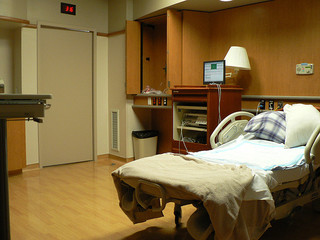Bedsores are one of the most common signs that an individual with limited mobility is suffering from neglect. While patients may develop bedsores despite a high level of care, they can also be a warning sign that something is amiss. Such warning signs are especially important when the patient is unable to communicate effectively. In an effort to help people identify mistreatment, our San Francisco nursing home neglect law firm is using today’s blog post to talk about bedsores and how they can indicate abuse.
 What are Bedsores?
What are Bedsores?
The Mayo Clinic explains that bedsores, also known as pressure sores or pressure ulcers, are injuries to the skin and tissues resulting from prolonged pressure. They most often arise on skin that covers bony areas including the hips, buttocks, heels, ankles, and under or around the head in bedridden individuals. Bedsores are categorized by four stages of severity. In Stage One, the skin is intact but may be discolored (may not occur with darker skin) and the area can become painful or feel either warmer or cooler than surrounding skin. Stage Two is characterized by an open wound and damage to or loss of the outer and underlying layers of skin. Stage Three is marked by a deep wound that has a crater-like appearance, exposing some fat, and may involve damage beyond the primary wound. Stage Four is the most serious and involves a large-scale loss of tissue that may expose muscle, bone, or tendon. These stages are illustrated on the bedsore page of Apparelyzed, a spinal cord support forum.
Bedsores can have serious consequences. As the Apparelyzed site notes, untreated sores can lead to amputation and potentially lead to fatal complications. Even well cared for patients can die if an infection sets in, as demonstrated by the death of Christopher Reeve in 2004 when a pressure sore led to a system-wide infection. A recent study by UCLA confirmed a direct link between bedsores and mortality rates. Researchers found that seniors who developed bedsores during a hospital stay were more likely to die, had longer hospital stays, and were more likely to be readmitted within a month of discharge from the facility.
Who is at Risk?
Bedsores appear most often in individuals who have a medical condition limiting their ability to move and to shift positions, leading to confinement in a wheelchair or in bed for prolonged periods. Incontinence is also a major risk factor since wet skin is more prone to developing sores. In order to prevent pressure sores, nursing home residents with such mobility limitations should be moved or repositioned by caregivers frequently. Lubricants or protective padding can also help. Some studies suggest proper nutrition can also help prevent bedsores.
Bedsores as a Sign of Nursing Home Neglect
If you notice bedsores on a loved one, you should be concerned. Bedsores are frequently a sign of caregiver neglect and they are often seen in cases of nursing home neglect. While they are not conclusive evidence of mistreatment, they should prompt loved ones to investigate further. Although it was prepared in 2002, the California Department of Justice’s “Citizen’s Guide to Preventing and Reporting Elder Abuse” is one useful resource for those concerned about a possible case of elder abuse. If you believe abuse has occurred, The Department of Consumer Affairs also provides a list of places where you can report suspected elder abuse, including cases of nursing home neglect.
You should also reach out a skilled Northern California elder abuse law firm. Victims of nursing home neglect have recovered substantial amounts in civil injury cases. These monies can help with medical costs and allow the victim to afford higher quality care. In the most tragic of cases, family members may have a wrongful death claim. In addition to compensating victims, these cases help send the message that our communities will not tolerate mistreatment of the elderly or the infirm. Call to arrange a free consultation with our San Francisco nursing home neglect lawyer.
See Related Blog Posts:
Elder Abuse Through Medications: The Threat of Dangerous Drugging
A Shocking Form of Elder Abuse: Sexual Abuse Against Seniors in Care Centers and At Home
(Photo by Rick Kempel)
 San Francisco Injury Lawyer Blog
San Francisco Injury Lawyer Blog

